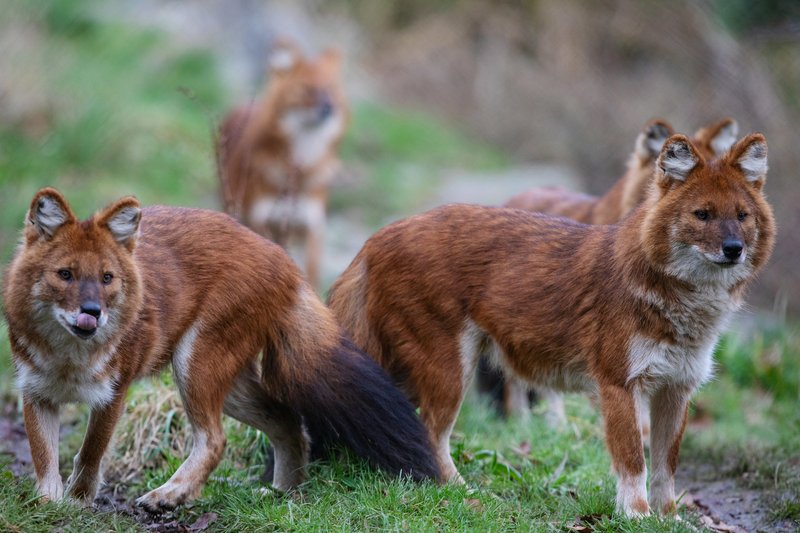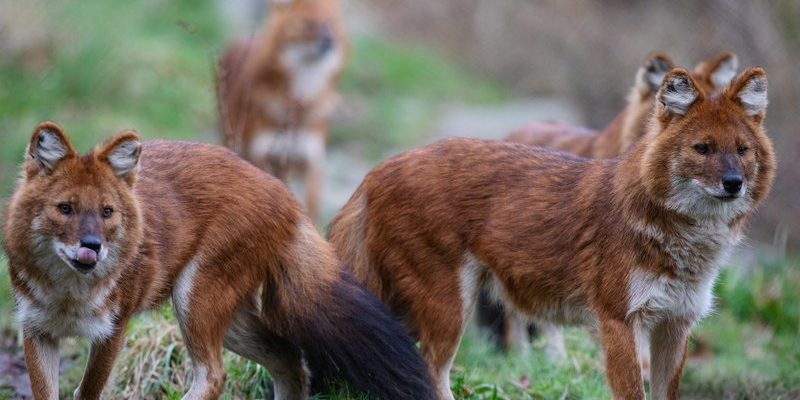
Imagine a team of skilled hunters, each member knowing exactly what to do. That’s the dhole for you! These dogs hunt in packs, cooperating seamlessly to chase down prey. Their social behavior can be likened to a sports team strategizing for victory—each player has a role to play. Unfortunately, their teamwork isn’t enough to shield them from the environmental changes and human activities that threaten their existence. You might be wondering: how endangered is the dhole really, and what’s being done to protect it? In this article, we’ll unpack the current state of dhole populations, the challenges they face, and the global conservation efforts that aim to save them.
What is a Dhole?
The dhole, or Cuon alpinus, is a fascinating species of wild dog that roams the forests and grasslands of Asia. With a rusty-red coat, bushy tail, and striking yellow eyes, these dogs are truly eye-catching. They can be found in a variety of habitats, from tropical forests to mountainous regions, showcasing their adaptability.
What’s really special about dholes is their social behavior. They live in packs that can range from 3 to 12 members, sometimes even up to 30 in certain areas! These packs are like families, working together to hunt and rear their young. Their hunting strategy is highly sophisticated, often involving coordinated chases to catch prey such as deer and wild boar. This level of cooperation is vital, as it helps them secure enough food to thrive.
Sadly, dholes are classified as endangered on the International Union for Conservation of Nature (IUCN) Red List. Their populations are declining, and it’s crucial to understand why. Let’s take a closer look at the factors contributing to their endangered status.
Why Are Dholes Endangered?
Several factors are contributing to the decline of dhole populations. Habitat loss is one of the biggest culprits. As forests are cleared for agriculture, urban development, and logging, dholes lose their homes—just like any animal, they need space to roam and hunt. When their habitat shrinks, their chances of survival diminish.
Another significant threat is human-wildlife conflict. Dholes sometimes prey on livestock, leading to retaliatory killings by farmers. This interaction can be detrimental, as it creates animosity between humans and wildlife. When dholes are killed out of fear or anger, their already vulnerable populations suffer even more.
Lastly, disease poses a significant risk. Dholes are susceptible to diseases like canine distemper and parvovirus, which can spread from domestic dogs to wild populations. This can lead to devastating effects on dhole packs, especially since they already have a smaller population to begin with.
Current Population Estimates
Estimating the exact number of dholes in the wild is tough. Their elusive nature makes them hard to spot, especially in dense forests. However, researchers estimate that there are only between 1,000 and 2,500 mature dholes left in the wild. This figure varies by region, with some areas experiencing steeper declines than others.
In India, for example, dholes are found in various national parks, but their numbers are dwindling. In regions like the Western Ghats, conservationists have noticed an alarming drop in their population. Interestingly, in some areas of Southeast Asia, dholes seem to be doing slightly better, although they still face significant challenges.
Tracking the dhole population is essential for conservation efforts. Researchers are using camera traps and tracking collars to monitor their movements, habits, and numbers. This data provides valuable insights that help shape conservation strategies aimed at protecting these incredible animals.
Global Conservation Initiatives
Numerous organizations and conservationists are stepping up to help dholes. The Wilderness Society, along with local governments and NGOs, is working to protect their habitats. This includes establishing protected areas that offer safe spaces for dholes to thrive without the threat of human encroachment.
Another key focus is community engagement. Many conservationists are teaching local farmers about coexistence strategies, encouraging them to find non-lethal ways to address conflicts with dholes. For example, using guard animals can help protect livestock while allowing dholes to roam freely in their natural habitats.
In addition, international cooperation plays a vital role. Countries are sharing knowledge and resources to protect the dhole across borders. This is crucial, as these animals often travel large distances throughout their range. By creating a united front, the chances of saving the dhole increase significantly.
What Can You Do to Help?
You might be thinking, “What can I do to help the dhole?” It’s a great question! There are actually several ways individuals can contribute to dhole conservation efforts, no matter where you live.
First, consider supporting wildlife conservation organizations that focus on protecting endangered species. Donations can help fund field research, habitat restoration, and educational programs.
Additionally, raising awareness about the dhole can make a big difference. Share information on social media, or even talk to friends and family about these magnificent creatures. The more people know about the challenges facing dholes, the more likely they’ll get involved in conservation efforts.
Lastly, if you have the opportunity to visit national parks or protected areas where dholes live, consider eco-tourism options. Responsible tourism can support local economies while promoting habitat conservation. Just remember: respect wildlife and their habitats, keeping a safe distance while observing from afar.
The dhole is a remarkable part of our planet’s biodiversity, but it’s in trouble. With threats like habitat loss, human-wildlife conflict, and disease, it’s crucial for us to act. By understanding the challenges these animals face and contributing to conservation efforts, we can help ensure that dholes remain a part of our natural world for generations to come.
Every small action counts, whether it’s donating to conservation initiatives or simply sharing information. Let’s step up to protect the dhole and allow them to thrive in the wild, where they belong. Together, we can make a difference!

